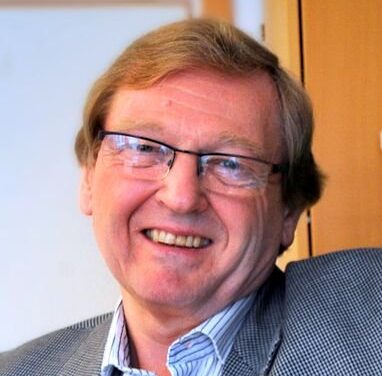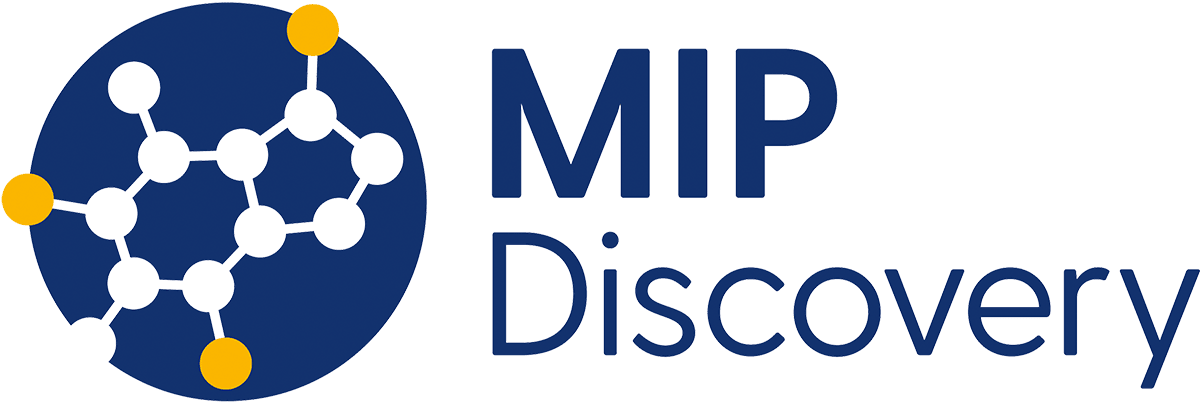
Looking back at 60 years of biosensor technology
EXPERT OPINION | PROFESSOR TONY TURNER
The name Anthony (Tony) Turneris, quite rightly, synonymous with the field of biosensors. He has numerous accolades for his lifetime works on biosensors and bioelectronics and is most widely known for pioneering the development of home blood glucose monitoring technology. He is Emeritus Professor of Cranfield University, Fellow of the Royal Society of Chemistry, Foreign Associate of the USA National Academy of Engineering, member of the Royal Swedish Academy of Engineering Sciences and has been awarded Ukraine’s highest academic distinction, the Vernadsky Gold Medal. Understandably, we were extremely excited to talk to Tony about his career in the field, the progression of biosensor technology and his thoughts on what the future may hold.
Can you give us a brief summary of some of the major milestones in the development of biosensors over the past 50 years?
I hope you will forgive me for stretching the timescale a little to include the seminal work of Leyland C Clark who published a paper in 1962, which laid the foundations of the field by describing the first “enzyme electrode” (1). This work was successfully commercialised by the Yellow Springs Instrument Company (YSI) in 1975, to provide an instrument which revolutionised point-of-care diagnostics for diabetes by accurately measuring glucose levels of patients on the spot. Shortly after, in 1976, Miles launched the Biostator, which was the first bedside artificial pancreas. It incorporated a glucose enzyme electrode together with an insulin delivery system and was mainly used to manage patients with gestational diabetes during childbirth. The first implantable fibre optic-based biosensor for glucose was invented by Jerome Schultz, in 1982 (2). These three early developments arguably set the scene for much of the following decades of biosensor research, which has been dominated by electrochemical biosensors for glucose, optical biosensors and the development of portable and / or implantable systems. Our own work published in 1984 (3) led to the launch of the MediSense ExacTech blood glucose biosensor, which was the first electrochemical glucose sensor for home use by people with diabetes and formed the basis for the enormously successful self-testing market we see today. The year 1992, saw the introduction of the i-STAT, the first silicon chip-based hand-held mutianalyte blood analyser for critical care analysis, which incorporated both biosensors and ion-selective electrodes. The commencement of that decade (1990) also saw surface plasmon resonance (SPR) appear in a commercial bioaffinity analyser created by Pharmacia, the BIAcore, and this was hugely beneficial for both commercial drug development and academic research on antibody / antigen interactions and other biological binding events. While medical applications have achieved the largest sales value, biosensors for environmental monitoring, process control, food quality and defence have also been hugely important. An early example was the Biochemical Oxygen Demand biosensor developed by Isao Karube in Japan (4). Bridging from these early developments to the current ubiquity of PCR, Lateral-flow Tests and wearable sensors is beyond the space available in this short commentary, but we have seen the field grow enormously over the past 50 years. A simple search of the term “biosensor” on Scopus now yields over 100,000 hits with 6,725 papers published in 2020, 1,255 in 2010 and just 1 in 1980.
Looking back, can you tell us about some of your personal career highlights over this time?
Clearly the most important piece of early technical work for me was the development of screen-printed mediated electrochemical glucose strips and the associated instrumentation. This not only formed the basis for the most commercially successful type of biosensor ever built, but had a huge impact on society. I was fortunate enough to be awarded a BDA (Diabetes UK) Senior Fellowship 1982-1987, and this brought me into close contact with local diabetes associations and people with diabetes, and the realisation this brought of how much our technology could help people stayed with me for the rest of my career. The technology itself was also a launch pad for my fledgling research team which initially used it to diversify into a wide range of applications and analytes relevant not only to medicine, but also for process control, food quality monitoring, environmental analysis, and defence and security. In addition, we built upon the concept of simple, easy-to-use and readily manufacturable sensors to explore other electrochemical, optical and piezoelectric transducers with a wide range of receptors including enzymes, antibodies, aptamers, DNA and last, but not least, MIPs, in aqueous, non-aqueous and gaseous media. On a broader front, being an early pioneer enabled me to become something of a champion for the field by co-founding the first journal on Biosensors (now Elsevier’s Biosensors and Bioelectronics), producing the first textbook on Biosensors (5) and launching the World Congress on Biosensors in 1990, which became the largest and most prestigious conference in the field. After 45 years in academia, >350 refereed journal papers and reviews, 50 successful PhD supervisions, leveraging IP and driving numerous start-ups, I am content to retire.
At what point did you realize your work would have such a huge impact to diabetes management?
Perhaps I can answer this question with an anecdote. Around 1983, I was invited to address the local diabetes association at the hospital in Southampton. The capacity audience comprised mainly of nurses supporting people with diabetes and diabetics themselves along with a few physicians. At the end of my presentation on our glucose sensors, they voted to reassign their precious, but small annual research fund to support my work. I was so humbled and wanted to tell them to keep their money for a more worthy cause. Their passionate support for the work we were doing, however, convinced me that the right thing to do was to take the money, but to make it work a hundred times harder than its cash value. I never forgot that moment, which was a milestone in my realisation of the potential impact of what we were doing. I should also briefly mention the personal support that Leyland C. Clark offered me in an early moment of doubt, describing our work as “really important” and the faith that Baxter Travenol placed in us when they invested several million dollars in our R&D programme after I demonstrated our prototype to them in Deerfield. Illinois.
Biosensors have been extremely successful in the diabetes management space, but uptake has been slower in other fields. Why do you think this is, and where do you see biosensors becoming mainstream next?
Our work on glucose biosensors was a very special case where we had the right technology at the right time to meet an urgent need. Key to success was also the availability at the time of a remarkable enzyme, glucose oxidase, which I have described as the “ideal enzyme” (6) in combination with novel electrochemistry and the discovery of a suitable mass manufacturing technique, screen printing. The field as a whole has been driven by a very clearly defined need and a series of ingenious advances that have led to better and better in vitro tests and, finally, reliable in vivo sensors that can also be coupled to insulin pumps to create the wearable artificial (or bionic) pancreas. Supporting these practical advances has been a huge academic boom and an enormous number of publications. The most common question I have had after plenary lectures at conference is “where do you see the next big success?” Of course, if I knew this in advance, I would be a very wealthy individual indeed, but now it is possible to answer in retrospect. It was, of course, COVID-19 diagnostics that have made lateral-flow tests and PCR household names and achieved billions of dollars in sales.
You are a great advocate for new technology, what are your thoughts on synthetic alternatives to biological reagents such as molecularly imprinted polymers, and what other technologies do you see impacting the diagnostics space in the future?
The exquisite selectivity and sensitivity of biological systems underlies the appeal of incorporating them into biosensors, but there are always drawbacks with any approach. The weakness of biological materials is their instability when incorporated into bioelectronic devices like biosensors. I have long been interested in biomimetic alternatives to biomolecules to overcome this limitation and explored this with many colleagues, including most notably with Klaus Mosbach at the VIII Enzyme Engineering conference in Helsingor, Denmark in 1985. This eventually led us to create the first MIP-based electrochemical sensor (7) together. In addition to MIPs, other polymers with affinity for key analytes can be remarkably effective. For example, a bis-boronic acid-based glucose indicating hydrogel (8) has been incorporated into an implantable miniaturised optical detection system to deliver glucose readings every 5 minutes. This achieved FDA approval, initially in 2018, and the company is now trading very successfully. Mentioning COVID diagnostics again, MIP Diagnostics itself has entered this space and we await the results with interest.
What are some of the biggest challenges in the field of biosensors that research should now be focusing on?
One of the perennial problems in diagnostics is knowing what analyte to target next. Who saw COVID-19 coming? Those who benefited did so more or less by accident, finding the technology that had developed for other purposes being adaptable for this new purpose. Thus, you either need a crystal ball or a platform that can be manufactured at scale and is quickly adaptable to a new analyte. In addition to large-scale, convenient and reliable manufacture, we need to improve the robustness of biosensors so that they can be incorporated into a wider range of “smart” devices and can be multiplexed in arrays to deliver a broad range of analytical information simultaneously and in real time. In this way we can support the decentralised, mobile and automated collection of real data to support analytical algorithms such as artificial intelligence to deliver really accurate management systems for the maintenance of the health and wellbeing of ourselves and our environment.
For anyone looking to learn more about biosensors technology, what would you say are the ‘must reads’ on the subject?
Strangely, this is the toughest question to answer. Nobody, including myself, ever wrote the perfect monologue on Biosensors, although Tony Cass and Elizabeth Hall both wrote very useful books in the early days. Arguably, it is now too late to write a single volume on the subject since the field is so large with over 100,000 papers. I would recommend journals such as Biosensors & Bioelectronics and ACS Sensors and you can still register to view the definitive conference in the area, Biosensors 2021, online until January 2022. I think the best approach is to read two or three recent reviews on the specific areas of Biosensors that you are interested in; focus on well-respected authors but never rely on a single writer since everyone is prone to some bias or another. You can also follow me on LinkedIn if you wish, where I regularly post snippets of interest by myself and others.
(2) Schultz, J.S., 1982. Optical sensor for plasma constituents. US Patent No. 4,344,438.

